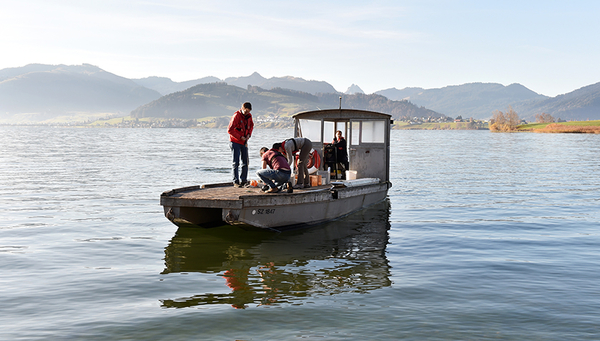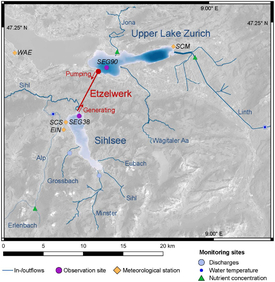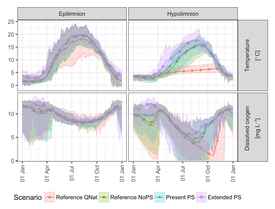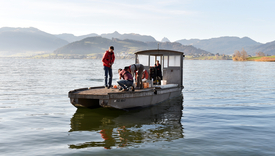News Detail
Pumped-storage hydropower: expansion and ecological limits
August 15, 2018 |
Reservoirs are critical to the stability of the European grid. Because electricity – unlike oil or coal – can only be directly stored in small amounts, power generation has to match demand at all times. This ensures that a constant frequency of 50 Hz is maintained in the transmission network.
When weather-dependent energy sources, such as wind and solar farms, are out of action, storage (with naturally fed reservoirs) and pumped-storage hydropower plants (with an additional lower‑altitude reservoir) can compensate by increasing production. Pumped-storage plants also offer the possibility of storing excess solar and wind power: at times of low demand, this energy is used to pump water to an upper reservoir, thus boosting generating capacity.
Ecological effects
To support the energy transition, the expansion of pumped-storage plants is currently under discussion at many sites. However, such measures can lead to changes of ecological significance in the two connected lakes or reservoirs, for two main reasons: firstly, pumped-storage operations result in exchanges of water and species between the waterbodies and, secondly, water from the upper reservoir (used to run the turbines) is usually withdrawn from deep layers, whereas in a natural lake it is normally discharged from the surface.
Two different reference scenarios
In an environmental impact assessment, a reference state is used as a basis for evaluating the effects of pumped-storage hydropower. In the past, the environmental impacts of the pumped‑storage scenario have generally only been compared with a single reference state. In the Eawag project, which was funded by Swiss Federal Railways (SBB AG), the researchers sought to disentangle the effects of deep water withdrawal from those of pumped-storage operations. They therefore analysed two reference scenarios – one with deep water withdrawal and a “quasi-natural” scenario with surface outflows.
The results of the simulations showed that deep water withdrawal can itself have substantial effects. The water temperature in the hypolimnion (lower layer) of the reservoir is markedly increased, oxygen depletion is reduced and nutrient concentrations are affected as a result. However, deep water withdrawal cannot explain all the differences: water temperature and oxygen and nutrient concentrations are also influenced by the exchange of water between the two waterbodies and by differences in temperature and concentrations between the intake in one lake and the outlet in the other.
Etzelwerk case study
Monitoring sites on Sihlsee and Upper Lake Zurich, which are connected by the Etzelwerk hydropower plant.
For the Etzelwerk plant – operated by SBB AG – which connects Sihlsee with the lower-lying Upper Lake Zurich, the results of the simulations were as follows: deep water withdrawal leads to considerable warming of the hypolimnion compared to the reference scenario with surface outflow. The increase can be up to 10°C in the autumn. Autumn mixing is thus facilitated, and oxygen concentrations in the hypolimnion rise again from September, whereas in the reference scenario they fall well below the legally specified threshold of 4 mg/L. Both effects are intensified by the water exchange associated with pumped-storage operations, though only to a limited extent with current operations. Significant expansion of pumped-storage operations, with around 20 times more water being pumped into Sihlsee from Lake Zurich than at present, would lead to further significant increases in bottom water temperature, especially in the spring and summer. In addition, winter mixing would be enhanced, and the duration and thickness of ice cover markedly reduced.
Conditions in the hypolimnion (lower layer) of Sihlsee are substantially influenced by water withdrawal depth. The quasi-natural scenario with surface outflow is a hypothetical situation.
It should be emphasized that the findings for Etzelwerk are not automatically applicable to other pumped-storage plants. In general, local conditions have to be assessed on an individual basis. This case study does, however, demonstrate the relevance of the choice of reference scenario.
In the meantime, SBB has decided how the 80-year-old hydropower plant is to be gradually modernized; for the time being, however, capacity is to remain unchanged. This was determined by economic considerations: if capacity had been expanded, the costs of modernization would have been two to three times higher.
Publication
Study funding: SBB AG




